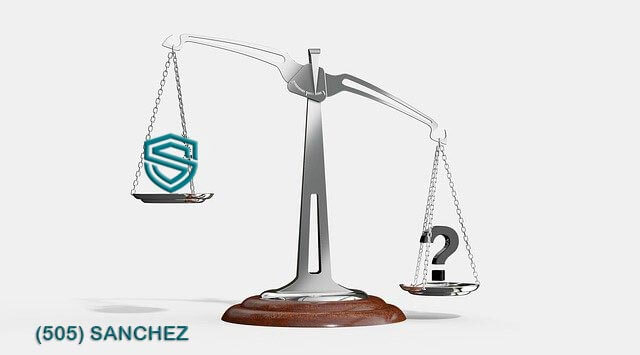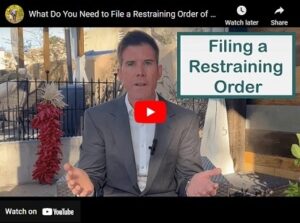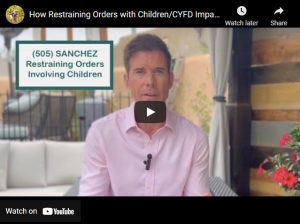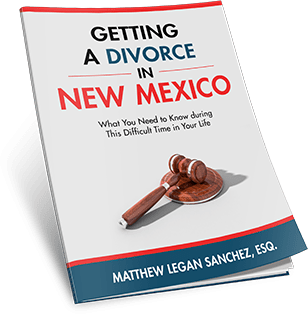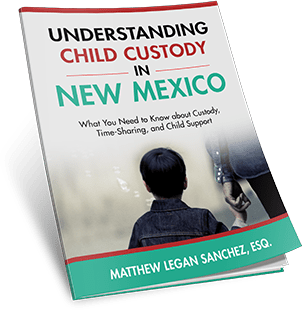Have you been wondering, “How long does a restraining order last in Albuquerque, New Mexico?”
If so, the duration of a protective order in Albuquerque depends on the specific circumstances of the case, and the judge’s ruling. With that said, the protective order usually lasts for about six months to one year.
Ultimately, how long the order lasts depends on the severity of the case’s facts and evidence. Although each case is created differently – there are similarities that overlap among restraining order cases.
Let’s uncover three common scenarios.
Understanding these three scenarios will help you to better understand how long a restraining order may last with your unique case and facts.
CLOSE CASES & MINIMAL ABUSE
Not all restraining order cases are created equally.
Some cases include substantial and overwhelming evidence of abuse. Conversely, some cases lack any evidence and merit. Instead, at times, the order is filed vindictively, or to gain a strategic advantage in a divorce or custody case.
Then there are close cases. These cases involve allegations of abuse that have minimal evidence. Nevertheless, the claims may have evidence that grows as the case unfolds.
Additionally, sometimes a weak case is strengthened by in court testimony – or the credibility of one side’s witnesses vs. the other.
These close cases can go in either direction. In New Mexico, a protective order can be entered when it is “more likely than not” that an act of abuse occurred that poses an immediate threat of danger. Ultimately, the judge or hearing officer decides what is “more likely than not.”
In other words, a judge or hearing officer is like an umpire that decides the case. Like an umpire, these calls are made in the moment. Moreover, these decisions are often based on a “gut feeling” – and can be influenced by personal history, beliefs, or preferences.
Finally, some judges or hearing officers lean on the side of caution with close cases. In doing so, the hearing officer may enter a six-month restraining order (usually the shortest duration), to be cautious.
In sum, close cases with minimal abuse usually result in a six month to one year restraining order being entered.
For more information on how to request a protective order watch this video.
MID-LEVEL ABUSE
Mid-level abuse cases have enough evidence to easily meet the “more likely than not,” or 51% of the evidence necessary for a protective order to be entered.
This evidence may come through vivid and credible courtroom testimony. In other cases, this evidence comes through witness statement such as eyewitness observations of abuse.
Also, CYFD may become involved with cases that involve children. In doing so, CYFD usually investigates the facts. After the investigation is completed, CYFD then testifies regarding their findings.
Usually, CYFD testifying that an act of abuse occurred – or that one parent poses a danger to the child – is enough for a restraining order to be entered. In these situations, and as discussed below, the order can control custody or timesharing for six months.
On the other hand, mid-level abuse cases usually result in a one-year order that protects the household member. This household member is usually an ex romantic partner, or family member.
HIGH OR DISTURBING ABUSE
Restraining order of protection cases are like snowflakes. Each case is unique and multifaceted. In some cases, the allegations are weak and quickly melt away.
Then there are mid-level cases with compelling testimony or evidence.
Finally, some cases are highly disturbing. These cases involve clear and disturbing evidence of abuse.
This disturbing evidence may be claims that a son violently attacked his mother, breaking her hip, and leaving her for dead.
In other cases, the evidence may include a video of a parent hitting and cursing at a toddler.
Otherwise, the case may involve threats or insults that shock and disturb. In doing so, the facts or evidence may leave the hearing officer with a sick feeling in their stomach.
Restraining order cases are not a precise science. Often the judge or hearing officer has many cases for the day and limited time to hear each case. Consequently, the hearing officer may hear the evidence – and then decide based on their experience and gut reaction.
Sometimes this gut reaction is that the restraining order is bogus. In this situation, the protective order likely will be dismissed.
Other times, the gut reaction is a close or lukewarm. In this situation, hearing officer might lean on the side of caution – and enter a six-month order in the spirit of being cautious.
Otherwise, the evidence may be clear and convincing. In this case, a one-year restraining order will likely be granted.
And then there are disturbing cases with high and disconcerting evidence. In these cases, a restraining order may be entered between two and five years. With especially disturbing cases, an order may be entered between five and tens years.
Ultimately, the final decision depends on the circumstances, evidence, and the hearing officer’s gut reaction.
CHILDREN INVOVLED
Are children involved with your restraining order of protection? In other words, do the claims involve allegations of abuse or danger to a child?
If so, the temporary restraining order likely will grant one parent temporary custody until a hearing is held. At this hearing, the judge or hearing officer will determine if an act of abuse occurred that poses a danger to the child.
When a protective order is entered on behalf of a child, the order can control custody and visitation for six months. Nevertheless, the restraining order can only control child related issues for six months.
After the six-month period expires, custody and visitation must be addressed in an accompanying custody case through the Domestic Matters Court (DM Court).
Although temporary in nature, a protective order that involves children creates a status quo. Moving forward, this status quo can heavily influence the judge’s decision in the forthcoming or accompanying child custody case.
Consequently, it is essential to speak with an experienced child custody and domestic violence attorney about protective orders that involve children.
Check out this video for more information about Albuquerque protective orders that involve children and CYFD.
TOP ALBUQUERQUE RESTRAINING ORDER ATTORNEY
Do you still have questions about how long a restraining order lasts in Albuquerque, New Mexico?
If yes, it is essential to speak with an experienced domestic violence and child custody attorney today. A seasoned and successful family violence attorney can help you understand how long a restraining order may be entered, based on your case’s unique facts and evidence.
Are you searching for one the best attorneys for restraining order in Albuquerque, New Mexico? If so, Sanchez has handled the most complex cases across New Mexico.
Sanchez routinely handles protective order cases that involve child custody, domestic violence, uncontested divorce or contested divorce issues.

